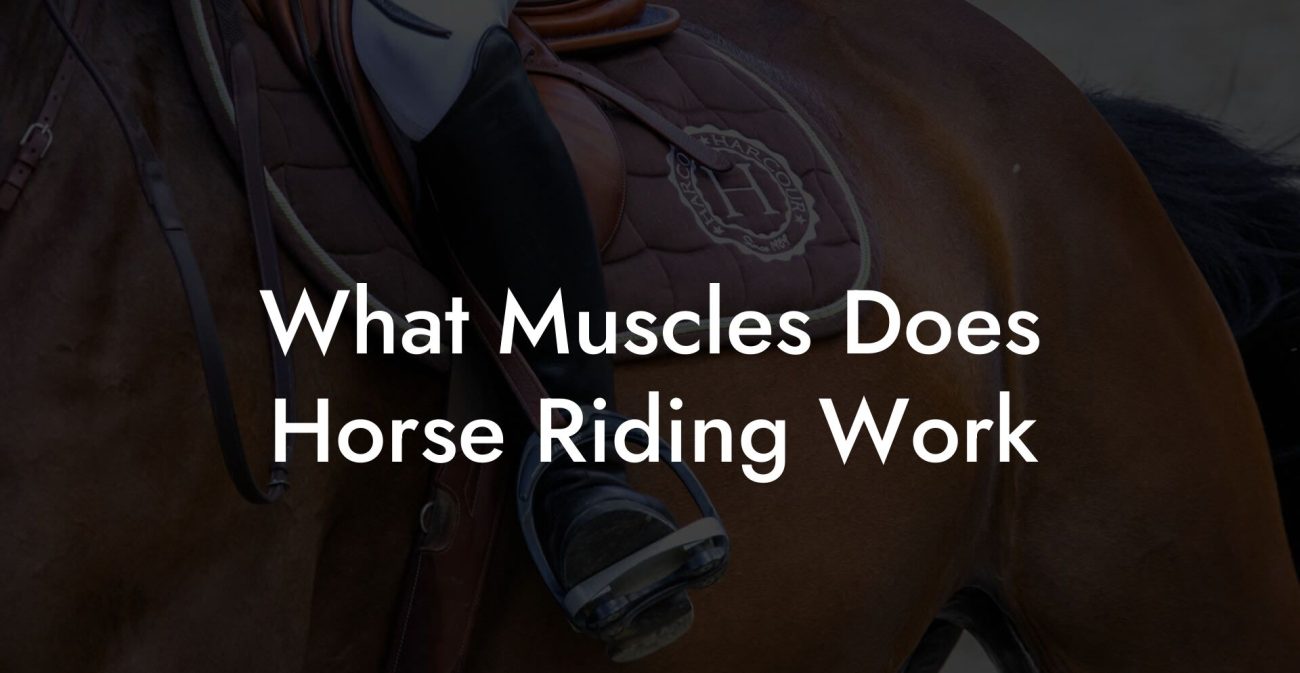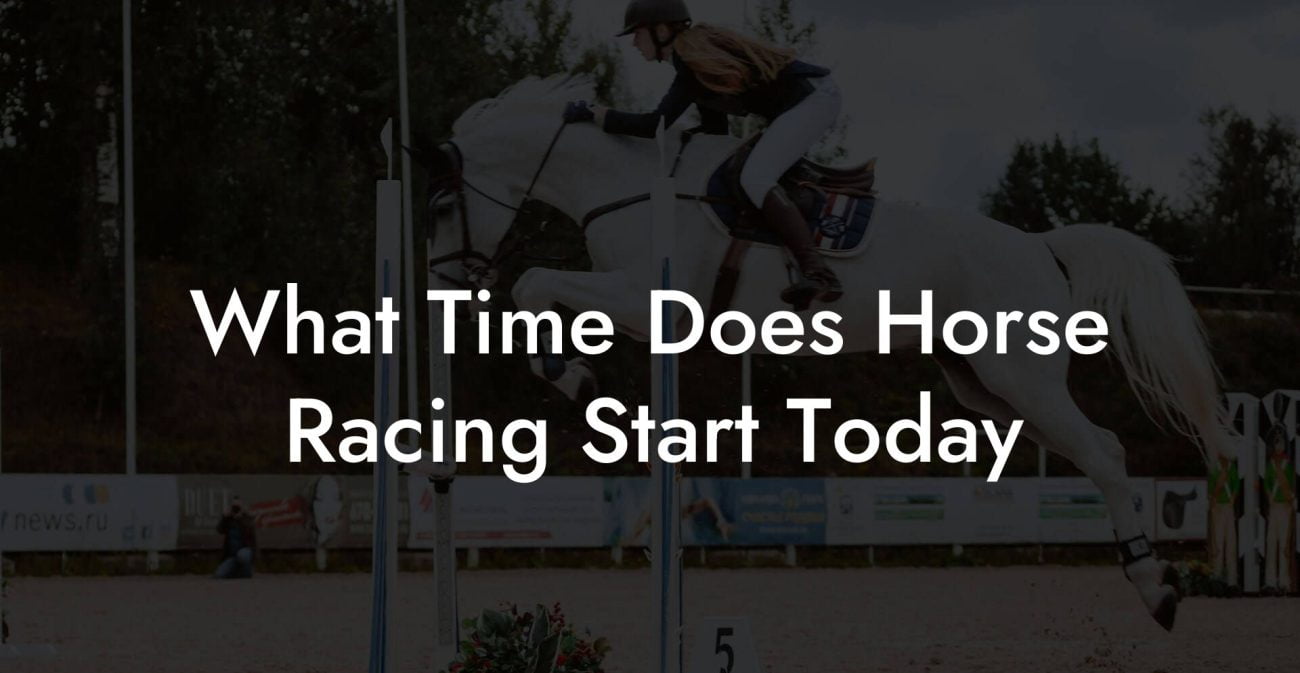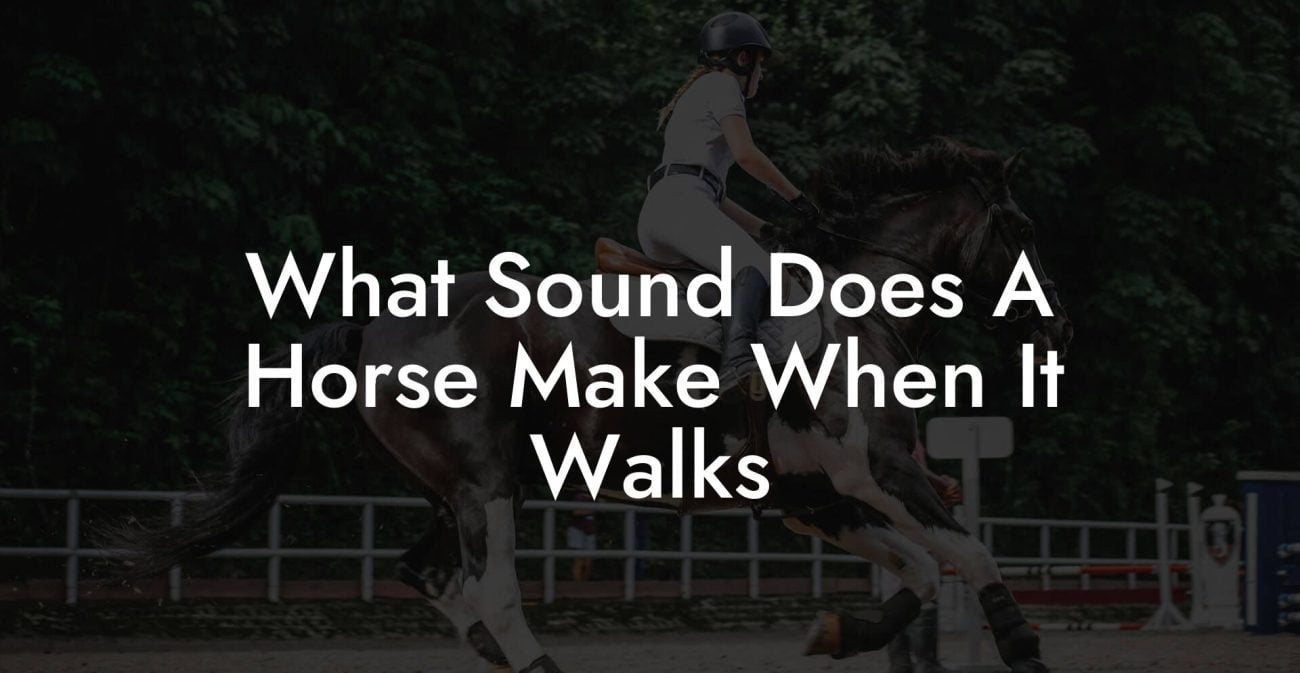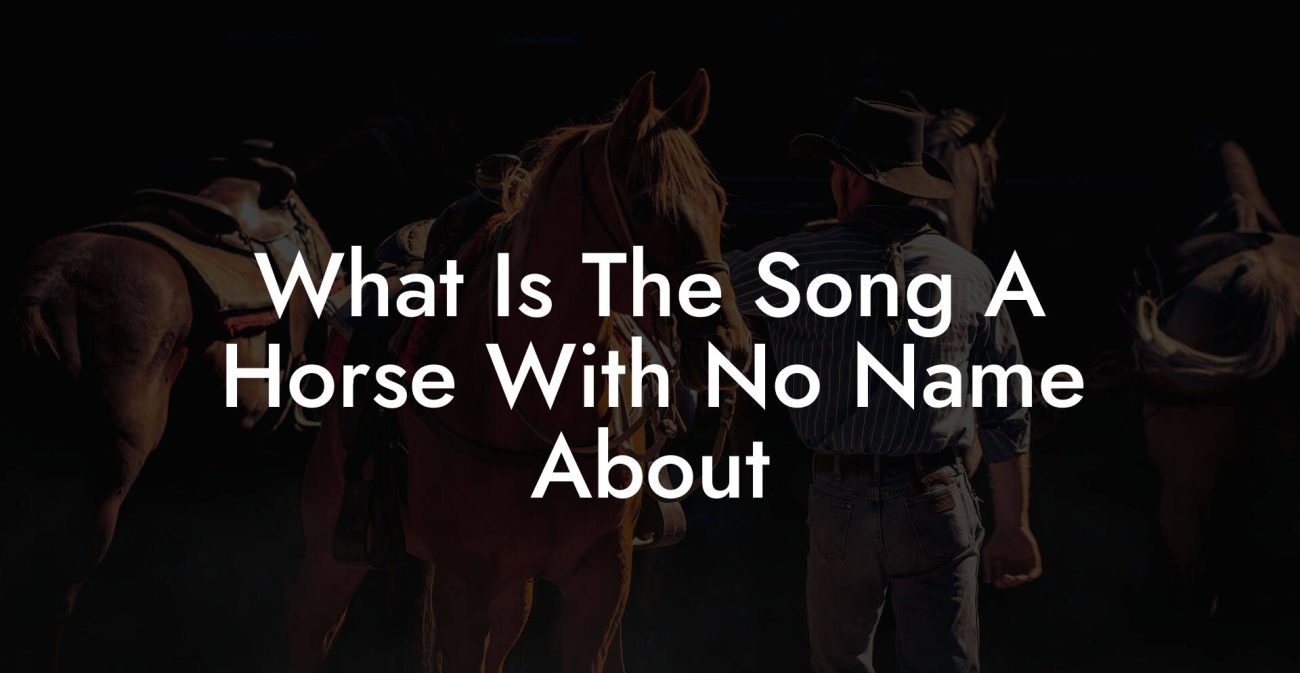Who knew that a horse could be your BFF, a workout partner, and a wise old sage all rolled into one? Dive into the spirited world of humane horse training guidelines where compassion trumps brute force, and every neigh tells a story of trust, respect, and good vibes. Whether you're a seasoned equestrian or a curious Gen-Z meme enthusiast wondering how to harness the gentle magic of horse care, this guide is your backstage pass to the art of ethical, respectful, and downright fun equine training.
Quick Links to Useful Sections
- What Are Humane Horse Training Guidelines?
- The Importance of Compassion in Equine Training
- Foundations of Humane Horse Training: Philosophies and Principles
- Conventional vs. Humane Horse Training Techniques
- Essential Tips for Building Trust with Your Horse
- 1. Start Slow and Steady
- 2. Master the Art of Body Language
- 3. Use Positive Reinforcement Generously
- 4. Consistency is Key
- 5. Patience Pays Off
- Understanding Equine Behavior and Communication
- Integrating Modern Technology with Traditional Methods
- nutrition, Health, and Environmental Considerations for Your Horse
- Health: Regular Vet Visits and Preventative Care
- Environmental Enrichment
- Training Techniques: Positive Reinforcement and Beyond
- Clicker Training
- Gentle Leading and Longeing
- Desensitization Training
- Habituation and Repetition
- Case Studies: Real-Life Transformations Through Humane Training
- Case Study 1: From Headstrong to Heartfelt
- Case Study 2: Trusting the Process After a Rough Start
- Case Study 3: Building a Bond Beyond Words
- Resources and Community Support: Your Next Steps
- FAQs About Humane Horse Training Guidelines
- Embrace the Journey: Becoming a True Advocate of Humane Horse Training
What Are Humane Horse Training Guidelines?
Humane horse training guidelines focus on fostering mutual trust and respect between you and your majestic four-legged friend. It’s not about dominating or coercing your horse with outdated, harsh methods; instead, think of it as a holistic collaboration where both parties are on the same team. By embracing techniques that prioritize positive reinforcement, empathy, and individualized care, you set the stage for a training experience that’s beneficial, fun, and ultimately, ethical.
At its core, humane horse training is about creating an environment where your equine partner feels safe and understood. Forget about competing with your horse or using intimidating tactics, this approach transforms training into a cooperative dance that celebrates your horse’s natural behaviors and quirks. It’s about unlocking a deeper level of communication and connection that can turn even the most stubborn stallion into your most loyal companion.
In the world of humane training, every hoofbeat matters, every snort is a conversation, and every moment is an opportunity to build trust. This guide will walk you through the principles, techniques, and tips that make humane horse training not only effective but also incredibly enriching for both you and your horse.
The Importance of Compassion in Equine Training
In today’s fast-paced, sometimes overly competitive world, compassion stands out as a rare gem, especially in horse training. When you embrace humane horse training guidelines, you’re choosing a path that values empathy over domination, cooperation over control, and partnership over punishment.
Why should you care about being compassionate with your horse? For starters, horses are emotional creatures with complex social structures and communication methods. Tapping into their emotional intelligence through calm, positive interactions can lead to a relationship that’s built on mutual respect. When your horse is relaxed and happy, learning becomes a natural, joyful process.
Moreover, compassionate training often leads to safer, more predictable behavior under pressure. A horse that trusts its trainer will be more willing to engage in challenging situations, from winding trail rides to high-stakes competition, because it knows you have its best interests at heart.
So, whether you’re training a sprightly pony or a seasoned equine veteran, remember that compassion isn’t just a “nice-to-have” element, it’s the foundation of truly effective and humane horse training.
Foundations of Humane Horse Training: Philosophies and Principles
Setting off on your equestrian journey with a clear understanding of the philosophies behind humane training can make all the difference. Here are some core principles that underpin these practices:
- Respect for the Animal: A horse is not just a tool or a beast of burden, it’s a sentient, social creature deserving of respect. Acknowledge its feelings, moods, and inherent dignity.
- Positive Reinforcement: Reward behaviors you want to see more often. Whether it’s a gentle pat, a treat, or a kind word, positive reinforcement builds confidence and cements good habits.
- Clear, Consistent Communication: Your body language, tone of voice, and timing all speak louder than any command. Aim to be clear and consistent so your horse begins to understand your cues effortlessly.
- Patience and Persistence: Training takes time. Embrace the moments of progress as well as the setbacks as part of a learning curve where every small victory counts.
- Holistic Approach: Incorporate physical, mental, and emotional well-being into your training routines. A well-cared-for horse is a happy learner.
These principles are far more than just buzzwords, they’re actionable guidelines that can transform your interactions with your horse. When you combine respect, positive reinforcement, and patient instruction, you create a training environment that nurtures growth for both you and your equine companion.
Conventional vs. Humane Horse Training Techniques
Let’s face it: horse training has a checkered history. Conventional methods of the past often relied on fear, physical punishment, and rigid discipline. But as our understanding of animal behavior has evolved, so too have our training techniques.
Conventional training may have yielded immediate, if superficial, compliance. However, these methods often overlooked the long-term mental and emotional well-being of the horse. In contrast, humane training focuses on building a relationship over time, a relationship that ensures lasting commitment and a stress-free environment.
Humane techniques leverage the power of positive reinforcement, where rewarding good behavior creates a cycle of trust and confidence. Techniques such as clicker training, where a distinct sound marks a correct behavior followed by a reward, have become popular because they are effective and gentle.
Another key difference is the emphasis on understanding equine psychology. Rather than forcing a command, humane training seeks to communicate in a language your horse understands, through subtle body language, eye contact, and a calm approach. This method allows your horse to make decisions and learn in a way that respects its natural instincts.
The result? A training process that’s less stressful, more engaging, and ultimately more rewarding for both you and your horse.
Essential Tips for Building Trust with Your Horse
Trust isn’t built overnight, it takes time, consistency, and a whole lot of heart. Here are some essential tips to establish and maintain trust with your horse:
1. Start Slow and Steady
Just like developing any great friendship, building trust with your horse starts with small, consistent interactions. Spend quiet time together, let your horse approach you, and always be the calm in its storm. Every gentle pat and soft word builds the foundation for trust.
2. Master the Art of Body Language
Horses are masters of non-verbal communication. Learn to read their cues and mirror their relaxed stance. A lowered head, a soft gaze, or even a relaxed tail can reveal a lot about your horse’s feelings. Make sure your own body language is open and non-threatening, projecting a sense of calm and confidence.
3. Use Positive Reinforcement Generously
Celebrate every small win. Whether it’s a successful step towards a new trick or a moment of calm during a stressful situation, reward your horse with treats, a soothing rub-down, or even verbal praise. Positive reinforcement not only motivates your horse, it cements the bond of trust.
4. Consistency is Key
Your horse thrives on routine and predictability. Establish consistent training sessions, use the same cues, and maintain clear expectations. This consistency helps reduce anxiety and fosters a secure environment where your horse feels safe to explore and learn.
5. Patience Pays Off
Every horse is unique, and progress might vary from one training session to the next. Set realistic goals, celebrate gradual improvements, and don’t get discouraged by setbacks. Remember, patience is not just a virtue, it’s the cornerstone of a trusting relationship.
Understanding Equine Behavior and Communication
Horses speak a language all their own, a blend of body language, vocalizations, and subtle cues. Getting to grips with equine behavior is like learning a new dialect; once you understand it, your horse’s world opens up in delightful ways.
For starters, horses are herd animals. In the wild, they rely on a complex social structure to navigate their environment, communicating trust, hierarchy, and safety through non-verbal cues. When you train your horse humanely, you’re tapping into this natural instinct, using cues that your horse instinctively understands.
Key to this communication is recognizing the signals your horse sends. A flicking ear might mean curiosity or irritation, a softly swishing tail can indicate relaxation, and a subtle shift in posture can speak volumes about its mood. Observing and responding to these signals with empathy and clarity creates a bridge of understanding.
Additionally, understanding your horse’s triggers, whether it’s a loud noise, an unexpected movement, or even a new object in the barn, can help you tailor your training to avoid stressful situations. When you master the art of equine communication, you’re equipped to anticipate needs and adjust your approach in real time.
The more you listen to your horse, the more you’ll discover that behind every snort, stomp, or prance lies a desire for understanding, respect, and a friendly nudge towards a more enriching life.
Integrating Modern Technology with Traditional Methods
While the heart of humane horse training lies in empathy and personal connection, there’s no denying that modern technology has a lot to offer. Blending time-tested techniques with today’s tech innovations can lead to even better results.
Today’s equestrians are turning to wearable tech, mobile apps, and sensor-equipped equipment to monitor everything from a horse’s heart rate during training to how much stress it’s experiencing. These tools provide instant feedback, helping you adapt your training methods on-the-fly.
For instance, smart halters and GPS trackers can help you gather data on your horse’s movement patterns, while apps designed for equine training offer personalized training plans based on real-time analytics. This marriage of technology and tradition ensures that you’re not only following humane guidelines, but you’re also optimizing your approach based on concrete, measurable data.
It might sound high-tech, but think of it as giving your horse a fitness tracker. Just as you’d check your own step count, monitoring your horse’s health can provide insights that enable a more responsive, caring training regimen. By embracing technology, you reinforce your commitment to a well-rounded and modern approach to horse care.
nutrition, Health, and Environmental Considerations for Your Horse
A well-trained horse starts with a well-cared-for horse. Humane training goes hand in hand with proper nutrition, health, and environmental management. It’s like feeding your body nutritious food and then hitting the gym, only in this case, your horse is the one getting fit and happy.
A balanced diet for your horse isn’t only about grains and feed; it includes access to quality forage, fresh water, and even the occasional supplement to ensure your equine friend maintains optimal health. Consider foods rich in fiber, as well as vitamins and minerals that promote strong hooves and a lustrous coat. When your horse is well-nourished, it’s naturally more receptive, energetic, and ready to learn.
Health: Regular Vet Visits and Preventative Care
Just like humans, horses thrive when they’re well looked after. Regular check-ups, dental care, and vaccinations are essential components of their health care regime. Preventative care not only keeps common illnesses at bay but also ensures that your training sessions are free from the interruptions of unexpected health issues.
Environmental Enrichment
Your stable or pasture isn’t just a housing unit, it’s part of your horse’s daily experience. Incorporating environmental enrichment, whether through safe toys, varied terrain, or designated play areas, stimulates your horse’s curiosity and natural behaviors. A happy environment reduces stress levels, creating the perfect backdrop for effective training.
In sum, when you invest in your horse’s nutrition, health, and surroundings, you’re laying the groundwork for a positive, collaborative training experience. It’s all about ensuring your horse is in tip-top shape, ready for the next fun-filled training session.
Training Techniques: Positive Reinforcement and Beyond
At the heart of humane horse training guidelines lies an empowering technique, positive reinforcement. Rewarding desired behaviors helps your horse learn quickly, without the stress or negative associations that come from punitive measures. Let’s dive deeper into some effective, compassion-driven techniques.
Clicker Training
Once used mainly for training dogs, clicker training has found a beloved place in humane horse training as well. It involves using a distinct sound (a clicker) to mark correct behavior, immediately followed by a reward. This precise method eliminates guesswork, helping your horse understand exactly what behavior earned that tasty treat or loving pat.
Gentle Leading and Longeing
Whether you’re guiding your horse along a trail or preparing for more advanced maneuvers, gentle leading and longeing provide a foundation of respect and communication. These techniques emphasize a relaxed approach to movement, where pressure is applied minimally and removed as soon as the right response is achieved.
Desensitization Training
Equine life is full of surprises, from sudden shadows to the unexpected trumpet of a car horn. Desensitization training involves gradually exposing your horse to various stimuli in a controlled setting. Over time, what was once alarming becomes just another part of their environment, enabling a smoother, stress-free interaction with the world around them.
Habituation and Repetition
Just like us, horses learn through repetition. Habituation techniques help them become comfortable with routine tasks or commands. By repeating these tasks regularly and rewarding improvements, you cultivate a stable, stress-free training environment.
These techniques work best when used in a supportive, respectful setting where your horse can learn and grow at its own pace. By combining a variety of methods, you’re not only fostering a deeper connection but also adapting to the individual needs and personality of your equine partner.
Case Studies: Real-Life Transformations Through Humane Training
Sometimes the best way to understand the impact of humane horse training is to see it in action. Let’s take a look at some real-life case studies that showcase transformative journeys fueled by compassion and respect.
Case Study 1: From Headstrong to Heartfelt
Meet Bella, a spirited mare known for her feisty attitude and reluctance to be led. Her trainer, Alex, decided it was time for a change. Abandoning traditional methods of forceful leading, Alex introduced a series of clicker training and gentle leading exercises. Over weeks of consistent, empathetic training, Bella’s resistance melted away, replaced by a newfound willingness to engage. Today, Bella not only follows commands with ease but also displays a calm curiosity about her surroundings, a true transformation powered by humane techniques.
Case Study 2: Trusting the Process After a Rough Start
Rocky, a once timid gelding with a history of past trauma, was initially resistant to any form of training. His owner, Jamie, was determined to forge a path of healing rather than break his spirit. By carefully incorporating positive reinforcement techniques, like rewarding small progress and emphasizing gentle desensitization exercises, Rocky slowly began to trust. Now, he eagerly participates in routine training sessions and even looks forward to trying new challenges, proving that every horse can bloom with the right approach.
Case Study 3: Building a Bond Beyond Words
In this heartwarming example, Sam, a young rider with a passion for horse care, set out to build a unique bond with his horse, Thunder. By dedicating extra time to socialize outside formal training sessions, through grooming, relaxed pasture time, and playful interactions, Sam managed to establish a level of trust that traditional training methods couldn’t achieve. The result? Thunder’s behavior improved dramatically, and their connection transcended the ordinary teacher-student dynamic, evolving into a genuine friendship that empowers both.
These case studies remind us that with the right mix of patience, positive reinforcement, and respect for our equine friends, transformative progress is not just possible, it’s a rewarding journey every step of the way.
Resources and Community Support: Your Next Steps
Now that you’re equipped with a treasure trove of humane horse training guidelines, the journey is just beginning. The road to becoming a true advocate for ethical equine care is paved with ongoing learning, community engagement, and the willingness to adapt your methods as you and your horse grow together.
Explore reputable online forums, social media groups, and local equestrian clubs where trainers share tips, success stories, and cutting-edge research on humane techniques. Many experienced trainers offer workshops, webinars, and one-on-one coaching sessions that can help deepen your understanding of horse behavior and innovative training practices.
Consider tapping into resources like equine wellness blogs, YouTube channels dedicated to gentle horse training, and even podcasts that explore the intersection of modern science and traditional methods. The community is vibrant, inclusive, and eager to share its wealth of knowledge.
Don’t hesitate to reach out to professionals and peers alike. Whether you’re troubleshooting a specific behavior issue or looking for partner opportunities to exchange innovative ideas, community support is a vital resource on your path to ethical, humane horse training.
FAQs About Humane Horse Training Guidelines
Curiosity is the first step towards mastery, so here are some frequently asked questions to help clarify common queries about humane horse training.
1. What exactly is humane horse training?
Humane horse training is an ethical approach that focuses on positive reinforcement, empathy, and clear communication to build a trusting relationship between rider and horse. It moves away from forceful, punitive methods and prioritizes the emotional and physical well-being of the horse.
2. How does humane training differ from traditional training methods?
Unlike traditional methods that may rely on dominance and coercion, humane training explores gentle, progress-driven techniques such as clicker training and positive reinforcement, encouraging horses to learn willingly and without fear.
3. Can I really see better results with humane training?
Absolutely. Many trainers find that building mutual trust through humane methods results in lasting behavioral improvements, heightened responsiveness, and a stronger bond between horse and trainer.
4. Are there specific tools or equipment needed for humane training?
While the core of humane training is based on interpersonal communication and compassion, some useful tools include clickers, smart halters, GPS trackers, and training apps that help monitor progress and facilitate data-driven adjustments.
5. What are some effective techniques in humane training?
Techniques such as clicker training, gentle leading, desensitization, and consistent positive reinforcement are highly effective for encouraging the desired behaviors while ensuring your horse feels safe and respected.
6. How can I build trust with a previously traumatized horse?
Patience, positive experiences, and consistent, gentle training sessions can help rebuild trust with a traumatized horse. Small gestures of kindness, such as grooming and relaxed pasture time, can go a long way in healing past wounds.
7. Is humane training suitable for all horse breeds and ages?
Yes, humane training principles are adaptable to horses of all breeds and ages. Whether you’re working with a young foal or a seasoned old-timer, the focus on understanding, respect, and positive reinforcement can be tailored to fit each horse’s unique personality.
8. Where can I find more information about humane horse training?
Numerous online resources, from forums and social media groups to specialized training blogs and expert-led webinars, are available to help you deepen your knowledge and connect with a community of like-minded equestrians.
Embrace the Journey: Becoming a True Advocate of Humane Horse Training
Transitioning to humane horse training isn’t just a change in technique, it’s a transformation in mindset. Embracing the principles of empathy, patience, and respectful communication not only elevates your horse’s training experience but also enriches your connection with these magnificent animals.
Every step you take toward humane training creates a ripple effect of positivity, both inside the stable and beyond. By choosing techniques that honor the natural instincts and emotions of your horse, you’re making a bold statement about the kind of world you want to build, a world where compassion and understanding lead the way.
This journey is not without its challenges, but each moment of progress is a victory worth celebrating. As you continue to engage with the vibrant community of humane trainers and passionate equestrians, remember that every patient, kind, and thoughtful interaction is a building block of trust.
So, lace up those riding boots, dust off your clicker, and set out on an adventure that isn’t just about training a horse, it’s about forging a bond, nurturing a partnership, and redefining what it means to care for these marvelous creatures. Here’s to a future where every trot, canter, and gallop is filled with love, respect, and a healthy dose of humor!













